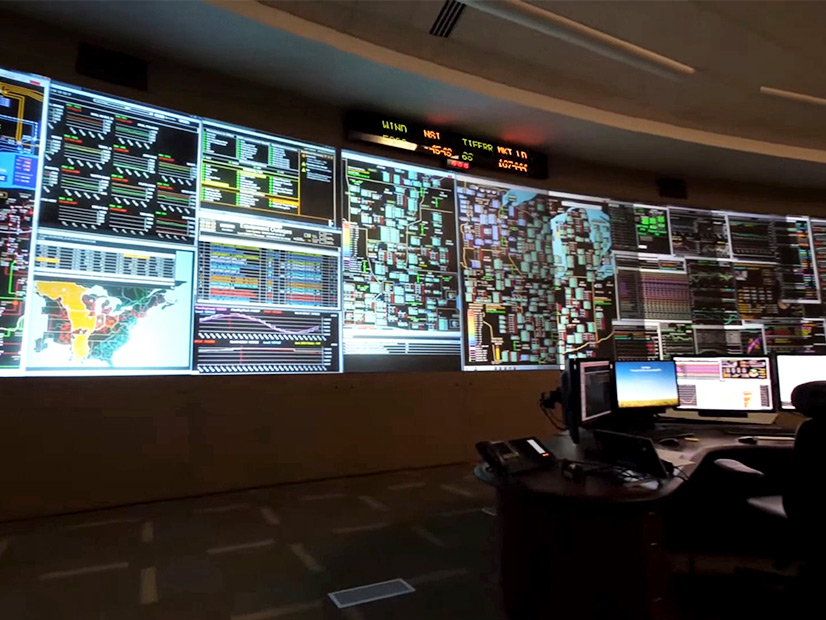MISO Defends June Emergency Declaration
Stakeholders last week questioned MISO’s decision to call an emergency to access load modifying resources on June 10 as it contended with above average temperatures and forced outages.
A premature northern heatwave during the end of spring generator maintenance season set off a brief maximum generation emergency in MISO’s North and Central regions. MISO ultimately asked for about 2.5 GW in load reduction and received about 5 GW more than requested. (See MISO Leadership Says Tx Expansion, Market Redefinition ‘not Optional’.)
Jason Howard, MISO manager of day-ahead commitments, said the RTO managed the emergency reliably. He said it began taking steps June 7 to prepare for tight operating conditions.
“One of the attributing factors is 32 GW in outages, 22 GW of which was unplanned and derates,” Howard said at a Market Subcommittee meeting July 8. “This is an unexpected number of outages.”
Howard said some northern points of the footprint experienced temperatures that were 15 degrees above average. He also said MISO’s data showed that imports would be sparse during the day.
MISO Senior Director of Operations Planning J.T. Smith said MISO operators realized by 10 a.m. that units’ emergency outputs wouldn’t cover a projected shortfall and that LMRs were needed.
Several stakeholders said they weren’t convinced that MISO exhausted the full ability of its non-emergency units and imports before turning to emergency-only resources.
Some questioned the two-hour notification time, which was enshrined in the MISO tariff last year in response to stakeholder calls for more warning ahead of emergencies. Under the new rule, MISO must declare an emergency “at least two hours prior to the anticipated emergency event.”
Smith said MISO couldn’t bank on an increasing supply of non-firm imports at the time. He also noted that MISO’s resource adequacy construct means that LMRs exist to cover summer peak load.
“We were really right on the cusp. … We have more than 10 GW of capacity sitting behind a Max Gen step 2a call,” Smith said.
“The reason why we call ahead of time is we will exhaust our short-lead time LMRs very quickly, and we’ll never use the two, four, six-hour [lead time] LMRs,” MISO Executive Director of Market Operations Shawn McFarlane said.

MISO Independent Market Monitor David Patton said it’s not surprising that the unseasonably hot weather and outages sent MISO into a tailspin.
Patton said MISO should use more realistic assumptions when calculating reserve margins.
“We keep reporting margins that seem high and seem to cover everything,” he said.
But Patton said MISO doesn’t fully account for unscheduled summer outages and derates.
“The reality is we have outages and derates that average 10 GW,” he said.
MISO’s current 19.3% reserve margin is above 2021’s 18.3% requirement, Patton said, but likely forced outages reduce the margin to 17.1%. If MISO modeled a more realistic scenario that included expected outages and derates, a 2,300-MW transfer limit between MISO South and Midwest and, accounted for its LMRs with long lead times, the expected reserve would fall to 10 to 13%, he said.
But that still leaves abnormally hot conditions unaccounted for, Patton said. If MISO assumed high demand from a sweltering day, the margin could drop to 1% or less.
MISO’s frequent maximum generation events are “really not as big a mystery as it appears,” Patton said.
However, Patton said MISO’s saving grace is non-firm imports during times of need from its neighbors.
“It’s why we probably don’t need to carry as much capacity as other areas,” he said.
Howard agreed that MISO has a high dependence on imports and said unusual weather patterns can throw imports into doubt.
Market User Interface Launch Delayed
MISO is delaying the launch of its new market user interface, part of the RTO’s market platform replacement.
MISO IT Senior Director Curtis Reister said the notifications feature of the new interface has problems that the vendor is working on. He said MISO will delay the planned July 6 parallel operations of both the old and new interfaces for an unspecified amount of time.
“We don’t have a new [start] date. We want to give ourselves time to apply this patch,” Reister told stakeholders. He said MISO will use the time to ensure the solution works before opening the interface to stakeholders.
He said MISO still plans four months of parallel operations and will delay the old user interface’s retirement date. Market participants use the market user interface to submit bids and offers in the MISO markets.
The new interface test environment has been open for testing by market participants since April. Parallel operations of the new and old interfaces were originally expected to take place July through October.
Reister said MISO will know more about the length of the delay in mid-July.
The new market platform will accommodate 30-minute reserves and energy storage participation and provide better modeling for combined cycle units. MISO has put those products on hold because its current monolithic platform isn’t sophisticated enough for them.
Monitor Says Congestion Worsening
The Monitor also appeared before the Market Subcommittee to again warn of MISO’s increasing congestion costs.
“There’s a trend in MISO of increasing congesting that we don’t think is going to slow down,” Patton said. The Monitor told MISO’s Board of Directors in June that the grid operator needs to address increasingly expensive congestion. (See MISO Monitor Warns of Ramping Needs, Tx Congestion.)
Patton told stakeholders that congestion is a major “cost generator” in MISO, with congestion costs doubling from last spring to Spring 2021.
MISO is on track to incur $2 billion to $2.5 billion worth of congestion costs this year, he said.
“That’s a level of congestion we haven’t seen on an annual basis over the last three years,” he said.
He added that Spring 2021’s average real-time congestion was the highest it’s been since 2014, owing to a 58% year-over-year increase in natural gas prices, higher market-to-market congestion with SPP and PJM, and growing wind output.
“As wind generation ramped in the fall of 2020 and the spring of 2021, we saw huge amounts of congestion on constraints … in the Midwest region,” Patton said.
The Monitor said in some intervals, wind generation can serve up to 40% of the RTO’s Midwest load.




